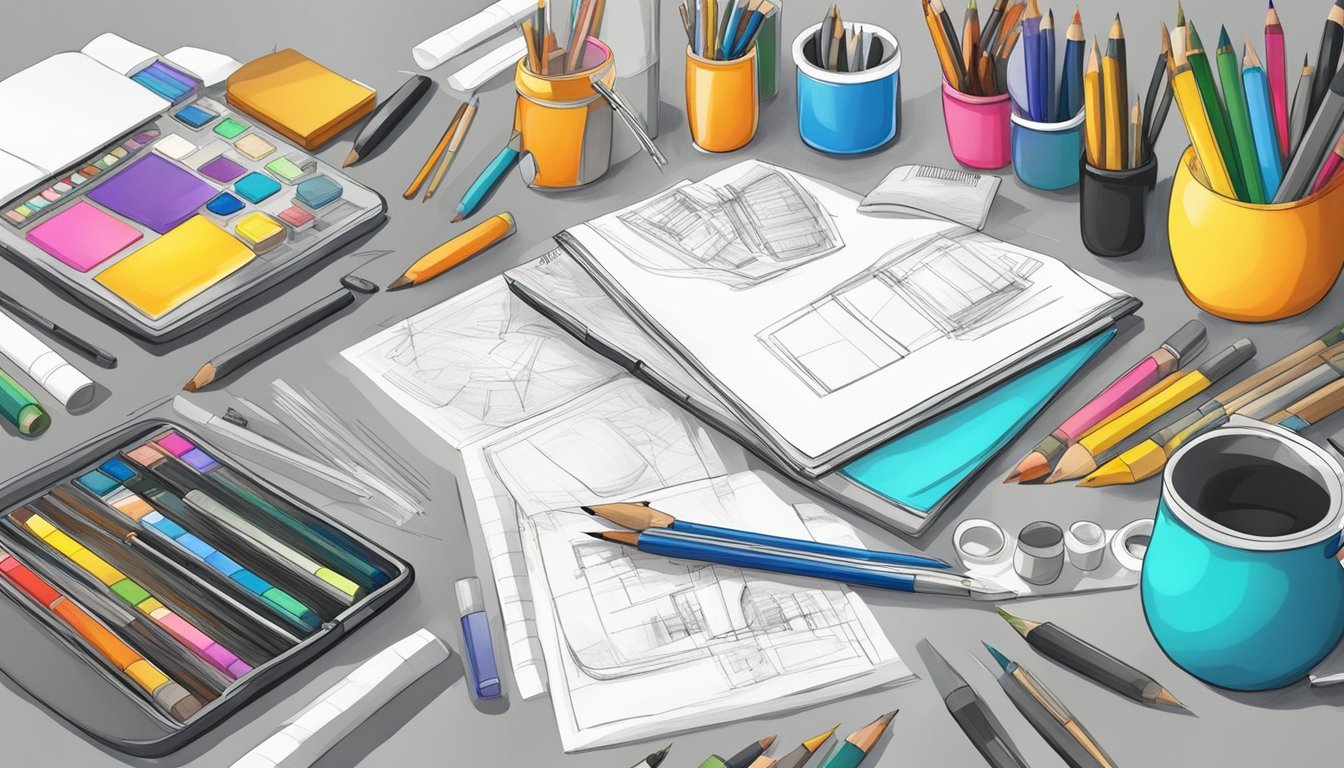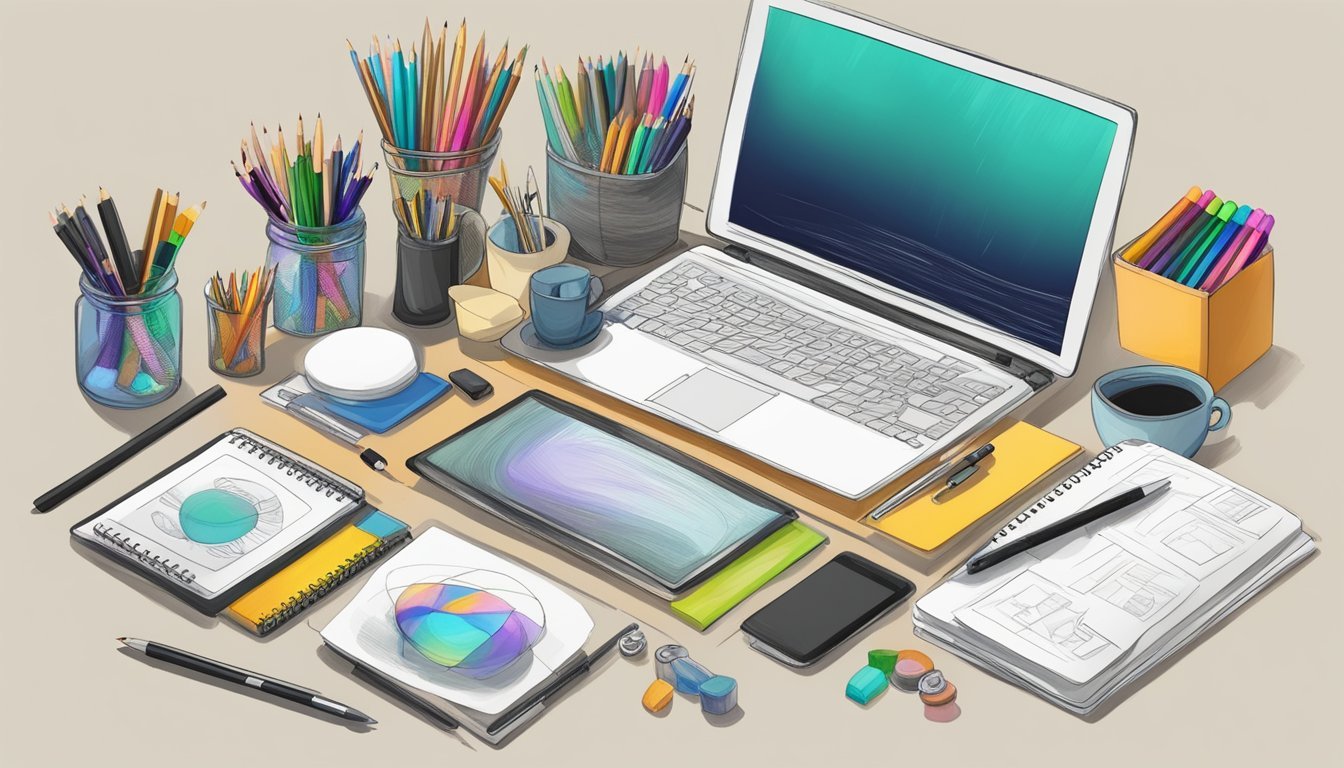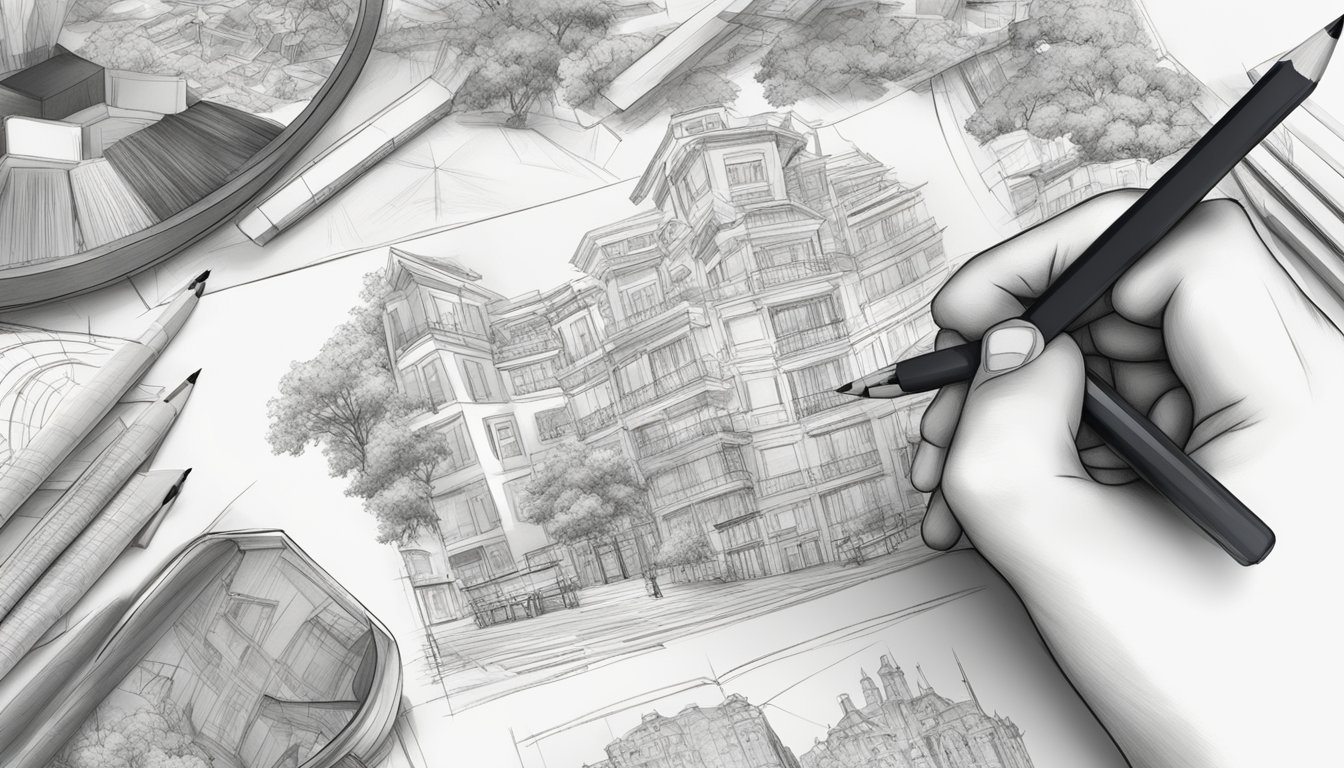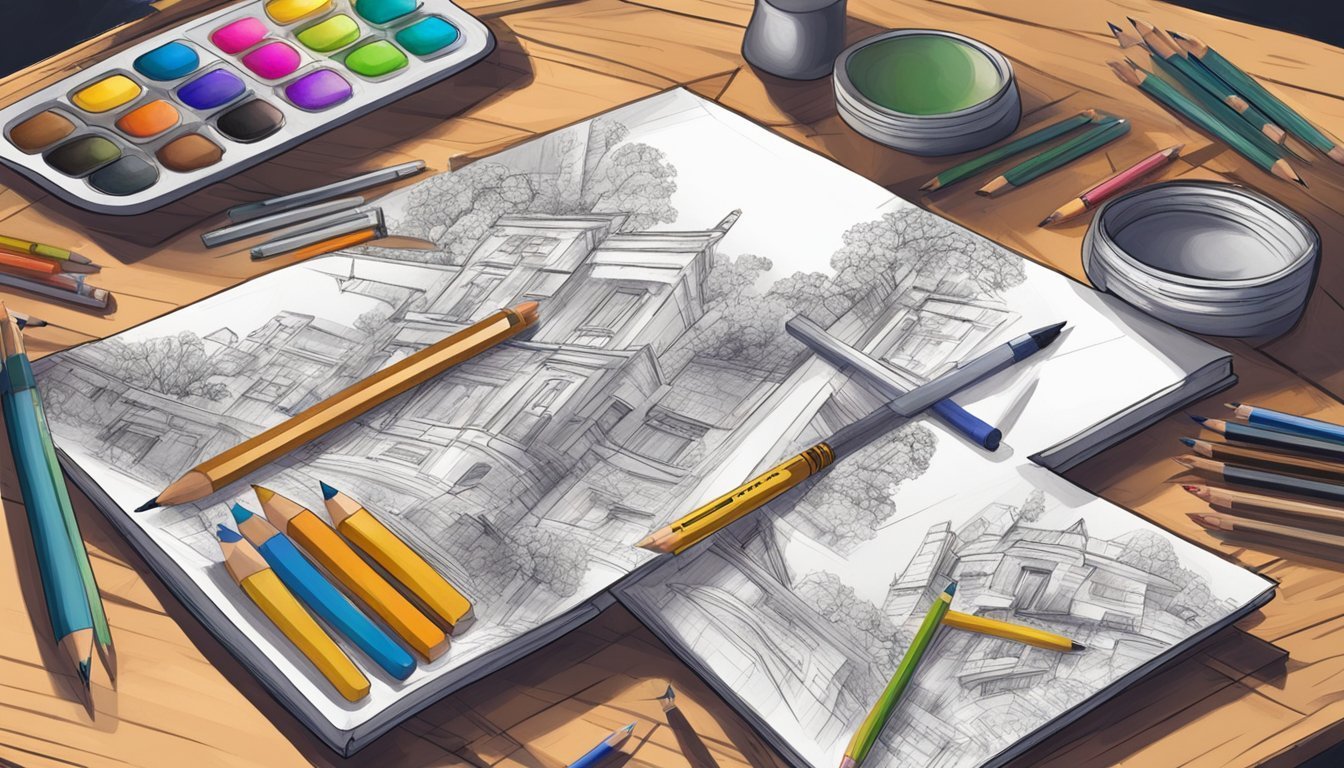Turning a sketch pad into a personal portfolio can be a fun and creative way to showcase your artwork.
This process not only helps you organize your work, but also allows you to present your unique style and ideas to potential clients or collaborators. With a bit of creativity and inspiration, you can transform a simple collection of sketches into a polished presentation that reflects your artistic journey.

Incorporating various techniques and materials can bring new life to your sketches.
You can experiment with different page layouts, binding styles, and even add descriptive notes about your artwork.
This portfolio will not only serve as a reflection of your skills, but it will also be a source of pride as you share your artistic vision with others.
Organize Your Sketches
Keeping your sketches organized is key to presenting your best work.
Start by sorting them into categories based on themes, styles, or techniques.
This makes it easier to find specific pieces later.
Next, create a dedicated space for your sketches.
Use folders or binders to keep everything tidy.
Label each section clearly, so you can quickly access what you need.
Consider digitizing your sketches for a modern touch.
You can scan or photograph your work and store them in digital folders.
This also serves as a backup.
As you organize, think about the story each sketch tells.
Grouping related pieces can enhance the viewing experience.
Make sure to include a few standout works that showcase your skills.
Lastly, regularly update your collection.
Remove outdated sketches, and include recent ones that reflect your growth as an artist.
Keeping things fresh helps maintain your portfolio’s relevance.
Select Your Best Work

Choosing the right pieces for your portfolio is key.
Start by going through your sketch pad and picking out the drawings that stand out to you.
Look for pieces that showcase your skills and creativity.
It’s great to include a variety of subjects and styles, but make sure each piece reflects your unique voice.
Consider how each work fits together.
You want a cohesive feel to your portfolio that shows your development as an artist.
It’s better to have a smaller selection of strong pieces than a large collection of average work.
Don’t hesitate to get feedback from friends or mentors.
They might see strengths in your work that you overlooked.
This feedback can help you make final choices that highlight your best creations.
Finally, keep the audience in mind.
Whether it’s potential clients, schools, or galleries, think about what they might look for in your work.
It’s all about making a strong impression with what you choose to showcase.
3) Include a Short Biography

Adding a short biography to your portfolio is a great way to introduce yourself.
This is your chance to share who you are and what you do.
Keep it concise and engaging.
Start with your name and what you specialize in, like “I’m a graphic designer focused on branding.” This gives people a quick snapshot of your work.
Mention your background briefly.
Include any notable experiences or education that shaped your skills.
You want to establish credibility without overwhelming the reader.
Personal touches matter too.
Consider adding a line about your passions or unique interests.
This helps create a connection with your audience.
Finally, keep the tone friendly.
You want to come across as approachable and relatable.
A short bio is not just a list of achievements; it’s a chance to show your personality!
4) Add a Table of Contents

Creating a table of contents can make your personal portfolio look polished and organized.
It helps potential clients or employers navigate through your work effortlessly.
Start by deciding where you want the table of contents to go.
After that, you can use software tools such as Microsoft Word to add it easily.
Just place your cursor where you want it and go to the “References” tab.
Select “Table of Contents” and choose a style that fits your portfolio.
You can opt for automatic options that will update your contents as you make changes.
This way, your table stays relevant.
If you update your sketches or projects, you can easily refresh the table of contents by right-clicking and choosing to update the field.
This simple step ensures that everything reflects your most current work.
With this feature, your portfolio will be not just visually appealing but also easy to navigate.
This small addition can make a big difference in how your work is perceived.
5) Create Themed Sections
Creating themed sections in your sketch pad can help organize your work and showcase your range.
Think about different themes that resonate with you, like nature, urban life, or fantasy.
Once you’ve chosen your themes, dedicate a few pages to each.
This gives your portfolio a cohesive look.
It also helps viewers easily navigate through your favorite subjects.
For each section, consider adding a title or a short description.
This can provide context and highlight your artistic intentions.
It’s a great way to add a personal touch to your portfolio.
Using themed sections not only makes your portfolio visually appealing but also tells a story about your journey as an artist.
You can show how your style evolves within each theme, which adds depth to your work.
6) Write Descriptions for Each Piece

Descriptions help bring your art to life.
Start with what materials you used.
Mention if it’s pencil, ink, or digital.
This gives context to your work.
Next, share your inspiration.
What sparked this piece? A specific moment, a feeling, or another artist might resonate with viewers.
Keep it concise but engaging.
Use vivid language that captures the mood and intent behind your artwork.
Avoid jargon; clarity is key.
Include dimensions when relevant.
This can help viewers visualize the scale of your work, whether it’s a small sketch or a large canvas.
Finally, consider adding a personal touch.
Share what you learned during the process or any challenges you faced.
This creates a deeper connection with your audience.
Thoughtful descriptions make your portfolio memorable and showcase your unique perspective as an artist.
7) Digitalize Your Art
Turning your sketches into digital art is easy and opens up many opportunities.
Start by scanning your artwork.
Set your scanner to at least 300 DPI for clear quality.
If you don’t have a scanner, capturing a good photo with your smartphone works too.
Just ensure the lighting is even and the image is straight.
Once you have a digital version, you can use software like Adobe Photoshop or GIMP.
Import your scanned image into the program.
If you enjoy drawing digitally, consider using a graphics tablet.
This allows you to trace over your sketches, giving you more control over details.
For outlining, many artists prefer the Pen Tool in their software.
It helps create smooth lines and edit them easily as you go.
Don’t forget to save your files in various formats.
Keep a high-resolution version for printing and a smaller one for sharing online.
This way, your art looks great no matter where it’s viewed.
With your sketches digitized, you’re ready to showcase your creativity in a modern way!
8) Include Contact Information

When you’re creating your personal portfolio, don’t forget to add your contact information.
This makes it easy for potential clients or employers to reach you.
Your name, phone number, and email address should be included prominently.
You can also add links to your social media profiles if they showcase your work.
Keep the design clean and readable.
A cluttered contact section can be overwhelming.
Make sure it stands out so that people know how to get in touch.
Consider including a brief statement inviting viewers to contact you for commissions or inquiries.
This adds a friendly touch and encourages engagement.
Lastly, update your contact information regularly.
Ensure that everything remains current to avoid missed opportunities.
Choose a Unique Cover Design

Your portfolio cover is the first thing people will see, so make it count.
A unique design can set the tone for your entire collection.
Start by thinking about your personal style.
Use colors and patterns that reflect your creativity.
You might choose a minimalistic look or go bold with vibrant images.
Consider customizing your cover.
Tools like Canva offer free templates that you can tweak to fit your vision.
You can add your artwork or even a personal logo.
If you prefer something tangible, look for handmade options on platforms like Etsy.
A customized leather sketch pad cover can add a touch of elegance and durability.
Don’t shy away from experimenting.
Whether you choose a digital design or a handmade cover, make sure it speaks to who you are as an artist.
This unique touch can make your portfolio memorable and engaging.
Incorporate Personal Branding

Incorporating personal branding into your portfolio can really set you apart.
It’s all about showcasing who you are and what you stand for through your work.
Start with a consistent look.
Choose a color scheme and font that reflect your style.
Use these elements throughout your portfolio.
This helps create a cohesive identity and makes your work memorable.
Think of your portfolio as a storytelling tool.
Each sketch can represent a part of your journey.
Include short descriptions that highlight your thought process and what inspired each piece.
Network your brand across platforms.
Link your portfolio to your social media and online profiles.
This allows potential clients or employers to see your work and connect with you easily.
Remember, your personal brand should evolve as you grow.
Keep updating your portfolio with new projects to demonstrate your skills and adapt to changing trends.
Emphasizing personal branding is a great way to showcase your unique talent.
Organizing Your Sketch Pad Portfolio
Creating a well-structured portfolio enhances the impact of your work.
You can highlight your artistic journey while making it easy for viewers to connect with your pieces.
Choosing the Right Layout
The layout of your sketch pad portfolio plays a crucial role in showcasing your work effectively.
Start by grouping similar pieces together.
This could be by theme, medium, or style.
This organization helps viewers understand your artistic progression.
Consider using a grid layout for clean presentation, or a thematic approach where each page tells a story.
Make sure to leave some white space.
This gives each piece room to breathe and draws attention to your work.
You can also incorporate page numbers or a table of contents for easier navigation.
Adding Personal Touches
Your sketch pad should reflect your unique style and personality.
Adding personal touches personalizes the experience for your viewer.
Start by including an introduction page.
Briefly explain your artistic philosophy and influences.
You can use handwritten notes or doodles for a more personal feel.
Feel free to insert photographs of your workspace or tools you use.
This gives insight into your creative environment.
You might also want to include sketches that represent your thought process.
This can offer valuable context and connect viewers to your artistry.
Presentation Techniques

Presenting your sketch pad as a personal portfolio involves careful consideration of both format and content.
By utilizing digital tools and incorporating various multimedia elements, you can enhance the viewer’s experience and showcase your work effectively.
Creating a Digital Version
Transforming your sketch pad into a digital format can significantly boost its accessibility and appeal.
Start by scanning high-quality images of your sketches.
Aim for a resolution that captures all details without pixelation.
Next, use design software like Adobe InDesign or Canva to layout your portfolio.
Organize your sketches in a visually engaging manner.
Consider including titles, dates, and brief descriptions to provide context.
You can also add a compelling biography with a profile picture to create a personal connection with your audience.
Finally, export your portfolio as a PDF or even present it as a website.
This allows you to share easily via email or social media, broadening your reach.
Incorporating Multimedia Elements
Enhancing your portfolio with multimedia can leave a lasting impression.
Video clips showcasing your drawing process or time-lapses can be captivating.
Consider adding these alongside your sketches to provide viewers insight into your techniques.
You can also incorporate audio elements, like a voiceover explaining your inspiration for each piece.
This adds depth and personalizes the experience.
Don’t forget to include hyperlinks to your social media or online store, encouraging viewers to connect further.
Using a mix of formats will keep your presentation dynamic.
Utilize platforms like Behance or ArtStation to display your work interactively.
This approach not only showcases your creativity but also engages viewers in a memorable way.


